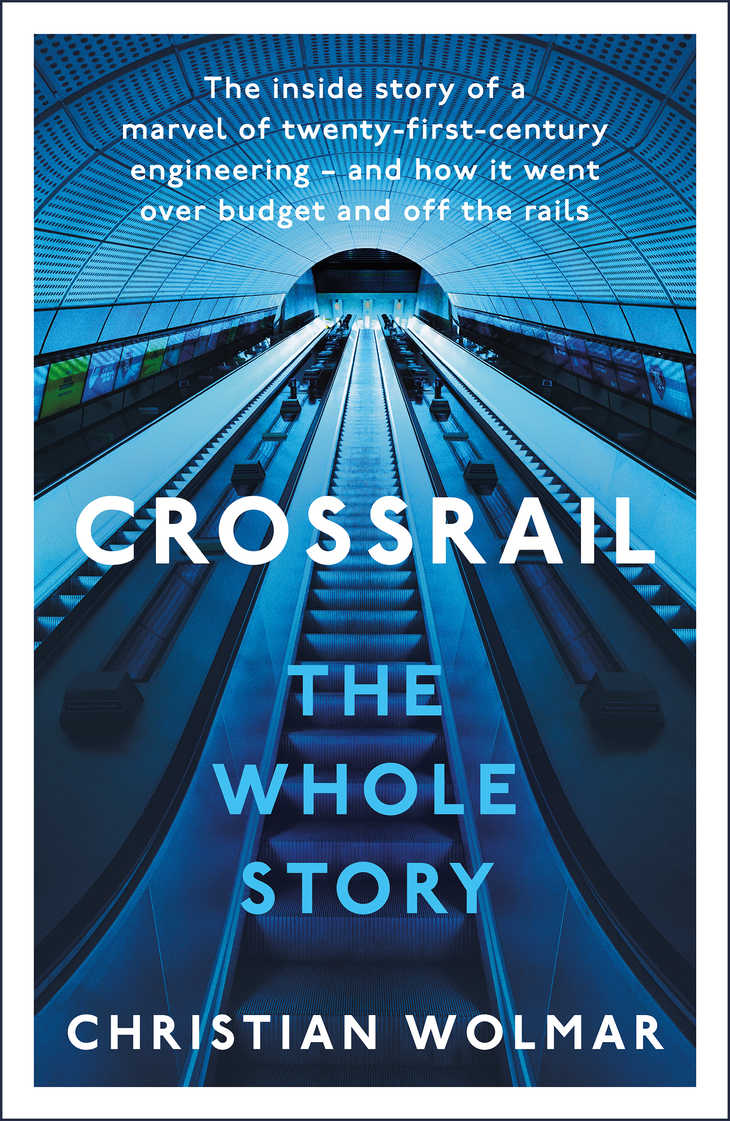In an edited extract from his book, Crossrail: The Whole Story, Christian Wolmar recalls the first time a 'Cross-rail' route was mooted, back in 1974.

A report on the future needs of London's railways, the London Rail Study — the first of several such works — was produced in 1974 by a joint team from the Department of Transport, British Rail and the Greater London Council. It suggested an ambitious scheme of building two rail lines under London.
The study was the first to mention the term 'Cross-rail' and although it recognised that numbers travelling by rail in London were actually falling, it used innovative computer-based studies for the first time in the UK to make the case for new railways.
Despite the overall fall in passenger numbers, pointed out the report, parts of the network were extremely crowded at peak times and needed new lines to relieve them. Moreover, it argued confidently — and correctly — that the decline of the early 1970s would be reversed (though its authors failed to anticipate just how rapidly rail travel in the capital was going to grow over the next four decades).

The London Rail Study recommended 'two BR Cross-rail lines', which were to be interlinked. The first was to run between Paddington and Liverpool Street, connecting at both Holborn and Leicester Square with the second line, which would been between Victoria and London Bridge.
Plans were also set out for what is now Thameslink (which would be achieved a few years later by the simple expedient of reopening Snow Hill Tunnel) and for the 'Fleet line', which would later be built as the Jubilee line. The report also endorsed the idea of a line between Chelsea and Hackney, a variant of which is now being considered as Crossrail 2.

One of the reasons why the Crossrail schemes were deemed necessary was that London's natural growth pattern was constrained by the Green Belt policy, a concept devised as far back as 1935 but principally brought into force in the aftermath of the second world war. This recognised that if London employment levels were to continue growing, commuters would have to undertake longer journeys. Crossing London, however, remained difficult, involving a change onto the Underground system and, quite possibly, the need to take another train on the other side. The Crossrail concept was a way of relieving this, offering the prospect of long journeys with possibly just one change or none at all.

The 1974 study estimated that 14,000 passengers would be carried during the morning peak between Paddington and Marble Arch and 21,000 between Liverpool Street and Ludgate Circus. It also suggested there should be through services to Heathrow Airport (at the time, incredibly, it had no rail connection and was only linked with the Underground system in December 1977). The estimated cost of all this was £300m; even accepting subsequent levels of inflation, this was remarkably optimistic. Although a feasibility study for the scheme was recommended by its authors as a high priority, nothing was done.
The mid-1970s were not a good time for visionary new schemes to add to London's already extensive rail network. The recommendations of the 1974 London Rail Study were largely ignored as the consequences of the financial crisis, and particularly the high inflation rate, triggered by the oil price rise of 1973, created an atmosphere that was hardly conducive to building major projects. London's population was also shrinking and use of the Underground had plummeted.

While railway managers were putting up ideas for new lines, politicians were sceptical of the value of the rail network and were making proposals to close lines and cut back on services. The 1974 study also scored a massive own goal by playing down the need for major new schemes: none of the ideas for extending London's rail network could, it asserted, 'be justified either on financial grounds or on a conventional social cost/benefit assessment of their transport effects'.
In view of such pessimism, it was not surprising that, apart from continuing work on the Fleet line, it took another decade and a half for renewed interest in major railway projects for London to re-emerge. This time, serious consideration would be given to the concept of Crossrail.

Crossrail: The Whole Story by Christian Wolmar, published by Head of Zeus [an Apollo book], RRP £9.99



